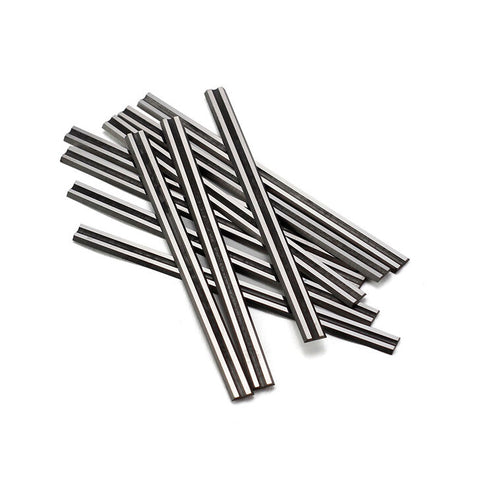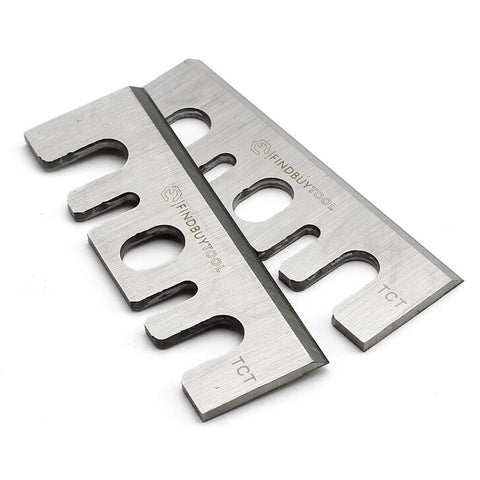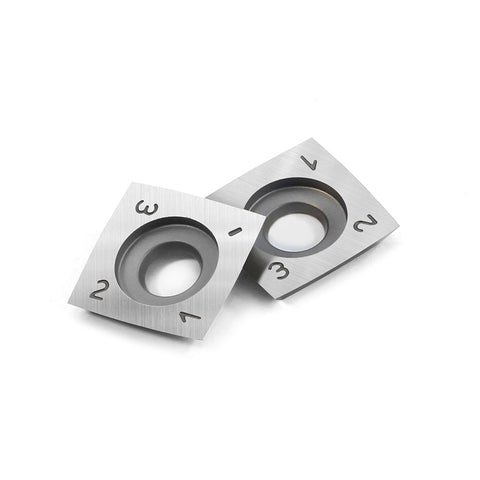A wood planer blade is a conventional planing tool that cuts and flattens the surface of wood in preparation for subsequent processing and usage. The performance and quality characteristics of different planer blade types predominantly depend on the material from which the blades are made and the geometric parameters that characterize the geometric structure, shape, and dimensions of the blade surface.
In general, high-speed steels (HSS), carbon and alloy tool steels, and tungsten carbide are used as materials from which planer blades are made. Planer tools are subject to high demands due to the wide variety of wood raw material structures and the potential for impurities in them in the form of metal solids.
Planer blades made of HSS and tungsten carbide present exceptional edges and performance in planing wood surfaces. There are several subdivisions of the tools used for woodworking cutting, such as jointers, planers, electric hand planers, and hand planers.
Although there are many different types of tools, the selection of the right blade for each tool is highly dependent on the cutter head design, the clamping method, and the material and characteristics of the wood being cut. Here are some favored types of planer blades used for cutting in woodworking.
Choose the right types of planer blades for wooden cutting
Planer blades fall into multiple categories: High-Speed Steel (HSS) planer blades, Solid tungsten carbide planer blades, Tungsten Carbide Tipped (TCT) planer blades, and indexable carbide inserts.
High-Speed Steel Planer Blades

On jointers and planers, high-speed steel planer blades are most frequently used, as they maintain long-lasting sharpness and will produce a faster and smoother finish.
High-speed steel is a kind of high-alloy steel containing a lot of carbon (C), tungsten (W), molybdenum (Mo), chromium (Cr), vanadium (V), and other elements. The hardness is 63-65 Rockwell "C". In terms of physicochemical properties, this material is characterized by high hardness, high heat resistance, and high wear resistance.
In 1898, the American mechanical and management engineer (Taylor F.W.) and metallurgist (White M.) patented the development of high-speed steel and conducted systematic cutting tests.
Test results indicate that when the cutting temperature is up to 600 ℃ or more, the hardness still shows no significant decline, and the cutting speed of its manufactured tools can reach more than 60 meters per minute, which greatly improves production efficiency.
It should be noted, nonetheless, that the applications and mechanical property indexes of different HSS grades vary. Some of the types mentioned as being the best include T1, M, V1, and V2. The two types, M-2 and T-1, will get very sharp, hold up fairly well, and are easy to sharpen.
If you need a longer service life, go with M-42 due to its superior red-hardness as compared to more conventional high-speed steels, but it's harder to sharpen. M2 high-speed steel planer blades are the premium choice in terms of value for money and are more durable than T1.
With an average Rockwell hardness of 63Rc for this grade and the addition of molybdenum and tungsten, M2 high-speed steel planer blades deliver longer service life. These blades excel in high-temperature environments and are well-suited for lengthy runs in both hardwood and softwoods.
Solid Tungsten Carbide Planer Blades

Solid tungsten carbide planer blades are made primarily from a combination of tungsten and carbon, which are incredibly hard and wear-resistant. Their unique properties include high heat resistance, exceptional hardness (typically over 90 HRA), and wear and corrosion resistance. They are therefore perfect for cutting and grinding hard materials.
With a relatively high carbon content, tungsten carbide is a highly durable and wear-resistant material. The weight is the largest and clearest distinction between HSS and carbide. The weight of carbide is roughly double that of HSS. So it’s very apparent when you hold a carbide planer blade and an HSS blade.
However, it’s challenging to sharpen carbide. The common practice is to purchase them as inserts and replace them when they chip or become worn out. Carbide wears more slowly than steel in that it’s tougher than steel, yet somewhat brittle. Additionally, its edge is not sharp, so it requires more stiffness and force/power.
A solid tungsten carbide planer blade is substantially more expensive than a carbide-tipped planer blade. Given their higher cost compared to alternative blade types, solid tungsten carbide planer blades may not be the most cost-effective option in certain situations.
Tungsten Carbide Tipped Planer Blades

TCT planer blades are less sharp than HSS planer blades. A blade with a tungsten carbide tip typically has cutting edges joined by brazing or welding that have the proper geometry for the material being cut. Carbide-cutting tools are superior in quality and have a better surface finish. However, carbide-tipped blades are generally less durable than solid carbide blades because there's a considerable probability of cracking when the tungsten carbides are brazed into the HSS backing. Even yet, carbide-tipped planer blades continue to produce outstanding results and are frequently less expensive than solid tungsten carbide planer blades. Despite the higher initial cost, the total cost is significantly lower because only the thick cutting edge is made of carbide. Tough, hardened tool steel, which is more affordable, is used to make the body.
Indexable Carbide Inserts

Indexable carbide inserts are mounted on a specialized helical cutter head and are arranged at a slight angle to the axis, which is the most advanced arrangement available. The helical cutter head cuts at an angle rather than perpendicular to the feed, which also leaves an excellent finish on the workpiece. Carbide insert knives are easy to install and replace, which means that when they become dull or damaged, you can rotate the inserts and continue to use them without affecting the geometry of a typical cutting tool. In addition, these inserts are removable, which means they will not be welded or brazed to the cutter body. Furthermore, this kind of insert has excellent wear resistance and long-lasting razor-sharp edges, which are ideal for all kinds of wood, plywood, MDF, etc.
Factors to Consider When Selecting Planer Blades
The proper choice of planer blade types is essential if you want to get outstanding outcomes with your woodworking tasks. There are some important factors to consider when selecting planer blades, including woodworking application, wood type, desired finish, and budget. For instance, blades with higher endurance and sharpness retention are needed for some types of wood, like hardwoods, which can be more difficult to deal with. Conversely, softer timbers might require different cutting techniques. More importantly, a practical factor to take into account when choosing planer blades is your budget. The prices of various blade types and materials can differ. HSS planer blades have a lower price than solid tungsten carbide planer blades and can give you very smooth surfaces. The indexable carbide inserts are more expensive, but more cost-effective in the long run.
Searching for the perfect fit for your woodworking projects? Visit our website page to browse the full range of planer blades, inserts, and other woodworking tools available for purchase. Findbuytool encompasses a full range of premium planer blades that are made from premium HSS or carbide for longevity. These planer blades fit major brands of wood planers such as DeWalt and Delta.
